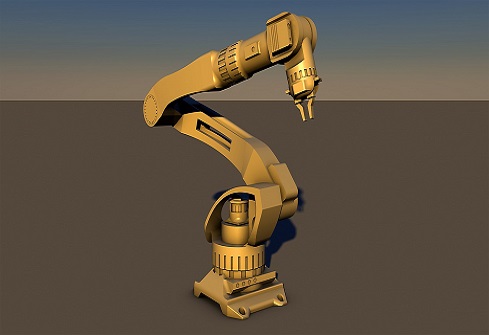
on 3/18/2021 by Lisa Morgan
Collected at: https://www.informationweek.com/big-data/10-ways-enterprises-can-use-the-edge/d/d-id/1340441?_mc=NL_IWK_EDT_IWK_daily_20210318&cid=NL_IWK_EDT_IWK_daily_20210318&elq_mid=102745&elq_cid=27653255
Edge computing is very much a work in progress, but there are several interesting use cases at work today and more anticipated for the future. Here’s a look at the possibilities.
Edge use cases are expanding across industries as companies move compute and analytics capabilities to the edge. Some companies want to reduce latency. Others want to gain greater insights into what’s happening in the field whether people, crops, or oil rigs.
“Edge computing enables companies and other types of organizations to analyze large amounts of data on site or on devices in real time,” said Shamik Mishra, CTO for Connectivity in the Engineering and R&D Business at global consulting firm Capgemini. “This can enable several new opportunities in terms of new sources of revenue, improved productivity, and decreased costs.”
In fact, there’s an entire world of the Internet of Things (IoT) innovation happening that makes edge use cases even more compelling including smart homes, wearables, AR video games and increasingly intelligent vehicles. Gartner expects the IoT platform market to grow to $7.6 billion by 2024, which represents both on-premises and cloud deployments. The company considers PaaS a key enabler of digital scenarios.
Allied Market Research sees the broader opportunity worth $16.5 billion by 2025, driven by the desire to avoid network latency problems and restrictions on bandwidth usage for storing data in the cloud. The company also expects 5G and IoT frameworks and languages “to provide lucrative opportunities for the market growth in upcoming years.”
Bob Moore, a principal and partner at professional services network PwC, said although 5G, cloud and IoT each support a wide variety of use cases, their confluence is enabling innovative use cases.
“While it’s easy to identify the role of various technologies in delivering these new experiences, it’s difficult to determine what value-chain models will succeed and sustain,” said Moore. “The current generation of deployments are delivering technology value, but business and economic sustainment remains to be seen.”
Dan Hays, another principal at PwC, considers the biggest challenge commercial considerations. “Edge computing technology has come a long way, but business models are in many cases still playing catch up. For example, questions largely remain about the best placement of edge data centers, specifically their proximity to mobile sites,” said Hays. “There is also uncertainty about who will ultimately foot the bill for the additional infrastructure needed for these early use cases compared to who is actually benefiting from the technology, specifically the reduced latency and network traffic that edge computing and 5G offer.”
Clearly, edge computing is very much a work in progress. However, there are several interesting use cases at work today and others anticipated for the future. Here’s a look at 10 ways enterprises can use the edge.
John Deere Modernizes Farming

Data sharing as enabled by the IoT and the cloud enables greater farming efficiencies. Farmers using John Deere equipment are already taking advantage of predictive maintenance and remote management. Edge computing enables real-time data sharing.
For example, a John Deere tractor and planter can plant over 700 corn seeds and 2,800 soybean seeds per second precisely. Within each second, the machines can sense conditions and make decisions and adjustments based on their surroundings. Edge computing helps farmers ensure their machines are planting seeds at the most accurate depth and location. Better decisions result in better crops.
“Fast and accurate decision-making is critical in every industry, but it’s especially important in agriculture,” said Julian Sanchez, director of emerging technology at John Deere. “Before having access to the IoT and connectivity, many farmers had to wait for harvest to be complete before collecting any data on how their crops performed. This made it difficult to make effective decisions for the next planting season. Now, with access to real-time data, farmers can make adjustments as they’re working in the field instead of having to wait months to see how their crops performed.”
Military, Law Enforcement and Emergency Responders Gain Situational Awareness

Military, law enforcement, and emergency responders need to understand what’s happening during a given situation and be able to gather intelligence in real time.
“Edge computing brings new levels of speed and flexibility to situational awareness in the field. For example, the ability to safely and securely process video from an unmanned aerial vehicle (UAV) or robot at the edge quickly provides users with awareness of surroundings, while SaaS solutions hosted in the cloud communicate and push this data to teams so they can see operations in near-real time,” said Mary Beth Hall, the director of wireless strategy at Panasonic System Solutions Company of North America.
Manufacturers Can Improve Profitability While Reducing Their Carbon Footprint

Many manufacturers struggle with the amount of material waste accumulated during production. This includes excess material that is not required to manufacture a specific product, as well as batches of defective products. Organizations can leverage edge-powered machine learning to identify defects in real-time so errors to be corrected mid-production before an entire batch of defective products is produced and then scrapped.
“According to some estimates, a factory that can make real-time decisions on yield optimization can save $14 million annually. [T]hese types of scrap reduction projects also positively impact the environment,” said Sastry Malladi, CTO at edge AI platform provider FogHorn. “Edge-powered initiatives can help the manufacturing industry save millions of tons of CO2 emissions by reducing scrap during production processes.”
Offshore Drilling Improves Uptime

Offshore drilling efficiency falters when equipment isn’t working properly. To improve uptime, Enterprise AI software provider C3 developed a set of AI applications that enable remote monitoring of assets on an offshore drilling platform. The assets include compressors, control valves and pumps, which are typical failure points within a subsystem.
“Risk scores were developed on each of the assets using the datapoints that were ingested at five to 15 minute intervals and displayed them on a UI dashboard for the operators to act before the time of failure,” said Varun Khanna, an AI and machine learning analyst at market research firm Gigaom. “Additionally, the digital twin of each asset would chart metrics like throughput, pressure, temperature, along with simple analytics. The key tangible value drivers were improved uptime, less OpEx/maintenance [and] secured production capacity. Additionally, this also enhanced the safety at the worksite and ensured downstream efficiencies.”
Scale Video Analytics

Video camera installations tend to fall into two basic categories: a few wireless cameras, or a larger number of wired cameras. The wireless cameras are cheap, but the solutions don’t scale well because the Wi-Fi connection can’t support the additional load and accommodate other traffic. Those limitations are the reasons why the larger video camera installations are wired. The wired cameras enable higher quality video and provide automated video analytics, but the wiring is expensive.
“The idea scenario would be the ability to support a large number of wireless cameras and be able to do cheap, automated video analysis. 5G and multi-access edge compute solve this problem,” said Jim Poole, VP of business development at data center and co-location infrastructure provider Equinix. “[Y]ou can bring applications such as proactive security, scene analytics (e.g., counting people in and out of a doorway) and inventory monitoring that organizations would never be able to afford otherwise.”
Utilities Improve Utility Grid Uptime

Edge computing enables utilities to make decisions in real time to ensure reliable delivery of energy in unusual situations. For example, when a device detects a power outage, it immediately delivers concise, accurate and actionable information to the utility.
“With this information, the utility can pinpoint the extent of the outage and the location, often before the customer even reports it,” said Tim Driscoll, director of information management outcomes at energy and water resource management solution provider Itron. “With this access to real-time information and the ability to respond remotely, utilities are equipped to improve grid efficiency, reliability and safety.”
Online Gaming Becomes More Fluid

Latency, throughput, and availability are primary concerns for online gamers. An edge architecture and platform can help gamers connect with each other in a low latency, high throughput environment.
“The challenge is for gaming providers to optimize the online gaming experience for their users, said Vipin Jain, CTO and co-founder at next-generation platform provider Pensando. “The architecture can be highly available because of lessened dependency on external networks.”
‘Personalized’ Retail Experiences Will Become More Personal

Jason Shepherd, VP of ecosystem at edge orchestration solution provider ZEDEDA and Linux Foundation Edge board member, considers computer vision the killer edge-computing app because the ability to “see” events in the physical world provides opportunity for innovation in such areas as object recognition, safety and security, quality control, predictive maintenance, and compliance monitoring. In the retail industry, he expects computer vision to usher in a new wave of personal services in brick-and-mortar stores that provide associates with real-time insights on current customers and informing longer term marketing decisions.
“Due to privacy concerns, the initial focus will be primarily around assessing shopper demographics (e.g., age, gender) and location, but we’ll increasingly see personalized shopping experiences based on individual identity with proper opt-in often triggered through customer loyalty programs,” said Shepherd. “This includes a trend for new ‘experiential’ shopping centers, for which customers expect to give up some privacy when they walk in the door in exchange for a better experience.”
Universal Experiences Will Emerge

What if the software differences across IoT devices were irrelevant such as among smartphones and smart homes? What if there were no difference between Android and iOS experiences?
“Today, moving from Android to iOS can be very confusing, but in the future, it wouldn’t matter which phone you have,” said Liran Weiss, chief corporate officer and co-founder at omnichannel device lifecycle and automation solutions mce Systems.”The benefit to users is a seamless, easy-to-use cross-device experience. The benefit to the operator is that they will control the events. Whoever has the relations with the users [will have] control over the lifecycle and experiences.”
There’s no standard in the industry yet, but Weiss expects one that will unify consumer experiences, like universal remotes provide a single point of TV access.
Manufacturing Shop Floor Machines Operate More Reliably

Industrial manufacturer Harrison Steel Castings operates electric arc furnaces and other precision machinery across on its 650,000 square foot factory floor. Networking these machines was cost prohibitive, so the IT staff used USB drives instead for data transfer, Sneakernet style.
Harrison IT Director Shane Rogers subsequently chose an edge computing solution from Scale Computing. Now, he’s using a small cluster of hyperconverged machines on the shop floor that collect machine and production data at regular intervals. This allows the staff to make better educated, data-driven decisions about their production process and machine maintenance. In addition, the speed and ease of data access helps with defect analysis and allows quality improvements to be put in place faster.
“In order to consistently produce precision engineered steel castings, it’s critical that we are able to collect and analyze data as close to the source as possible to ensure our machines are continuously calibrated,” said Rogers. “The extreme conditions that exist in and around our electric arc furnaces was another challenge that made collecting data a challenge with conventional infrastructure. With a tiny footprint and minimal power requirements, our hyperconverged infrastructure can be placed where we need it, allowing us to harness our data to make smarter decisions and better castings.”
